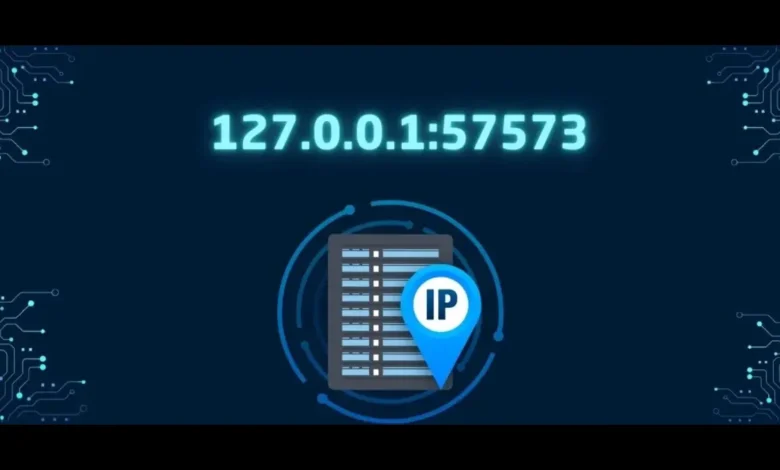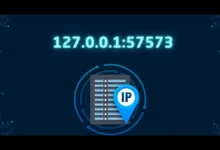How to Configure and Troubleshoot Connections on 127.0.0.1:57573

Introduction to 127.0.0.1:57573
Are you looking to navigate the complexities of local connections? If so, 127.0.0.1:57573 is a crucial address in your networking toolkit. This loopback IP not only serves as a testing ground for developers but also plays an essential role in various applications and services running on your machine.
Whether you’re troubleshooting connectivity issues or fine-tuning your settings, understanding how to work with this specific port can save you time and headaches. Let’s dive deep into what makes 127.0.0.1:57573 tick and explore how you can optimize its functionality for seamless performance!
Understanding Connections on 127.0.0.1:57573
Understanding connections on 127.0.0.1:57573 is essential for anyone working with local servers or applications. This address points to your machine, also known as localhost.
When you connect to this IP and port combination, you’re interacting directly with services running on your computer. It’s often used for testing purposes or local development environments.
The number 57573 represents a specific port that an application listens to for incoming requests. Each service may use a different port, allowing multiple applications to run simultaneously without interference.
It acts like a private tunnel between your device and the server processes operating locally. This setup can significantly enhance efficiency during development since changes can be tested immediately without deploying them elsewhere.
Understanding these mechanics helps in diagnosing issues quickly when things don’t work as expected, making it easier to troubleshoot any connection problems that arise.
How to Configure Your Connection Settings
Configuring your connection settings for 127.0.0.1:57573 is straightforward but requires attention to detail. Start by accessing your application’s network settings or configuration file.
Ensure you specify the IP address as 127.0.0.1, which refers to the local host on your machine, and set the port number to 57573.
If you’re using a web browser or an API client, make sure it points directly to this address and port combination.
Check any firewall settings that might block outgoing connections on this specific port; adjustments may be necessary here.
For applications requiring authentication, verify that credentials are entered correctly—mismatched usernames or passwords can lead to connection failures.
After making changes, always restart your application to apply new configurations effectively. This step often resolves minor glitches and ensures smoother communication through the designated local endpoint.
Common Issues and Troubleshooting Tips
When working with 127.0.1:57573, you may encounter a few common issues that disrupt your connection.
One frequent problem is the firewall blocking access. Ensure that your firewall settings permit traffic for this specific port to avoid interruptions.
Another issue could be misconfigured server settings. Double-check any relevant configuration files and verify that everything aligns correctly.
If you’re facing timeouts or slow responses, it may stem from high network traffic or resource limitations on your local machine. Monitoring system performance can offer insights into these bottlenecks.
Restarting your application or service often resolves transient errors. A simple reboot of the client software can refresh connections and apparent minor glitches.
These troubleshooting tips should help maintain smoother operations on 127.0.0.1:57573 without significant downtime.
Best Practices for Maintaining a Stable Connection
Consistency is critical to maintaining a stable connection at 127.0.0.1:57573tical. Always ensure that your server settings are correctly configured and reflect the latest requirements of your application.
Regularly monitor network performance to catch potential issues early. Use diagnostic tools to identify bottlenecks or interruptions in service.
Security measures play an essential role as well. Implement firewalls and regularly update software to mitigate vulnerabilities that could disrupt connections.
Clearing the cache periodically can enhance performance, too, reducing latency and ensuring smooth operation.
Keep documentation handy for troubleshooting steps specific to your setup. Please familiarize yourself with logs; they often provide insights into recurring problems before they escalate into more significant issues.
Advanced Configuration Options for Power Users
For power users looking to harness the full potential of 127.0.0.1:57573, advanced configurations are key. Dive into settings like custom ports and unique firewall rules that can enhance performance.
Consider modifying timeout settings for quicker response times during high-load scenarios. Adjusting these parameters can significantly improve your workflow efficiency.
Integrating third-party tools is another way to elevate your experience. Tools such as VPNs or proxy servers can add layers of security while allowing you to manage connections more dynamically.
Scripting automated tasks using languages like Python or Bash provides even further customization options. Automate repetitive actions, enabling smoother operation over time.
Experimenting with connection pooling techniques may yield better resource management and reduced latency in data retrieval processes when working on various applications linked through this local address.
Conclusion
Understanding how to configure and troubleshoot connections on 127.0.0.1:57573 can significantly enhance your networking experience, especially if you are a developer or an IT professional. The loopback address is essential for testing applications locally without external interference.
Getting your connection settings right ensures smooth communication between different services running on the same machine. By following straightforward configuration steps, you can eliminate potential errors that arise from improper settings.
When issues do occur, knowing common troubleshooting tips will help you quickly resolve them and keep your workflow uninterrupted. A stable connection is vital for productivity, so implementing best practices can prevent many headaches down the line.
For those looking to dive deeper into configurations, advanced options provide powerful ways to optimize performance tailored to specific needs. Whether you’re a beginner or a seasoned pro, understanding these aspects of 127.0.0.1:57573 allows for better management of local connections.
Mastering this knowledge not only improves efficiency but also empowers users with the tools needed to tackle any challenges they may face in their network setup journey.

